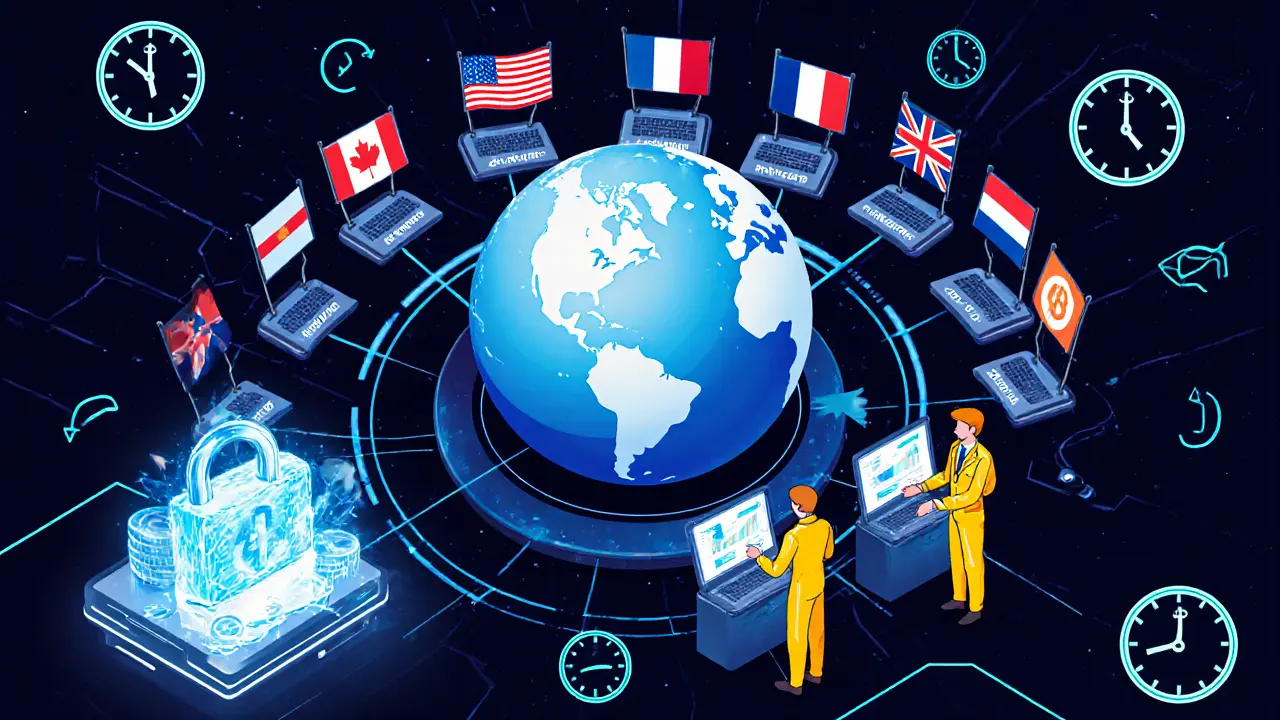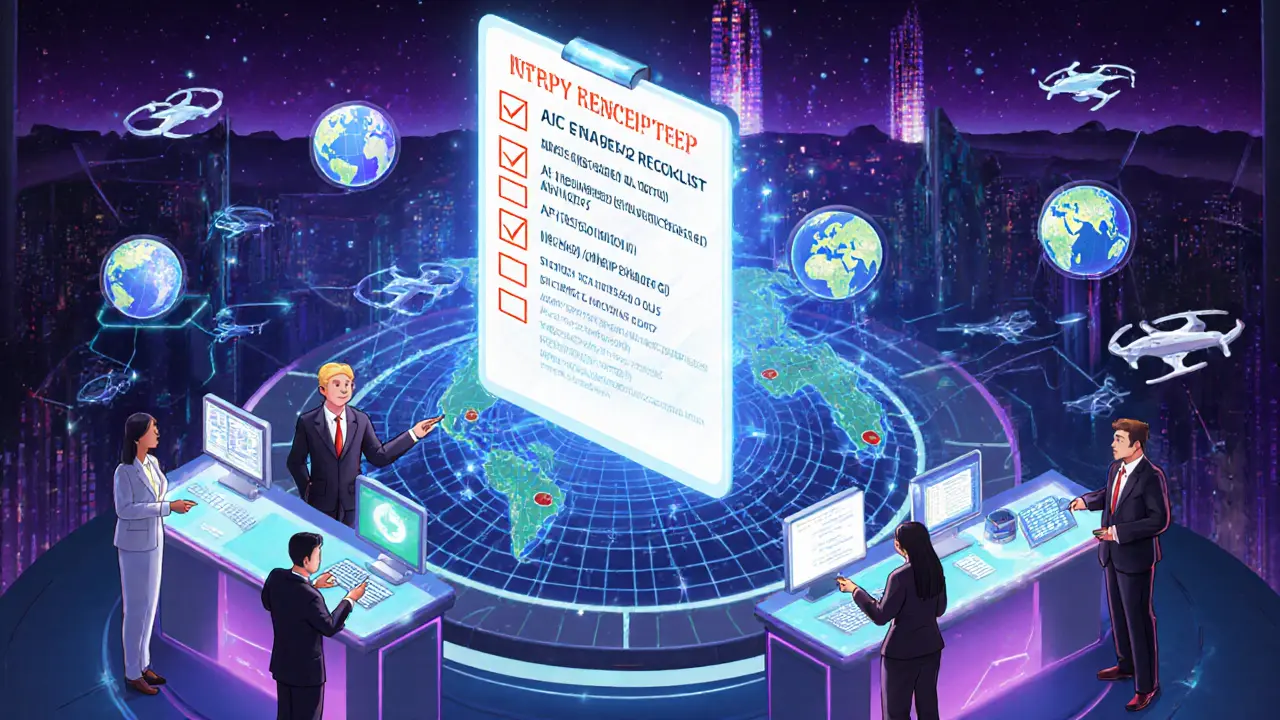How the World Is Fighting North Korean Crypto Crime
 Sep, 6 2025
Sep, 6 2025
Crypto Compliance Cost Calculator
Calculate Your Compliance Costs
Estimate annual compliance costs for your crypto exchange based on business size and requirements. This calculator reflects costs mentioned in the article, including blockchain analytics tools, staff training, and regulatory compliance.
Estimated Annual Compliance Costs
Based on the MSMT regulations and the article's data, your estimated compliance risk level is determined by your business size and compliance implementation.
Key Recommendations
Your business should consider implementing blockchain analytics tools and multi-signature security protocols as recommended by the MSMT.
When the news broke about a $1.5 billion hack on the ByBit exchange, most people thought it was just another hacker story. What they didn’t realize was that the attack was part of a massive, state‑run operation run by the Democratic People’s Republic of Korea (DPRK). The global community has responded with a patchwork of sanctions, forensic tools, and new cooperation frameworks. This guide walks you through who’s involved, what they’re doing, and why the fight matters for anyone using crypto today.
What exactly is North Korea crypto crime?
North Korean cryptocurrency crime is a state‑sponsored cyber‑theft enterprise that targets cryptocurrency exchanges, DeFi platforms, and even non‑fungible‑token (NFT) marketplaces. Operated mainly by the Lazarus Group, a hacking outfit tied to the Reconnaissance General Bureau, these actors steal, launder, and convert digital assets to fund weapons programs, missile development, and other illicit activities.
Since systematic tracking began, analysts estimate DPRK-linked thefts have topped $6 billion, with $2.17 billion recorded in the first half of 2025 alone. Roughly 35‑38 % of all state‑sponsored crypto thefts worldwide now come from North Korea, and the figure keeps climbing.
The vacuum left by the UN Panel of Experts
For years, the United Nations Panel of Experts on DPRK sanctions was the main body monitoring illicit crypto activity. When the Panel dissolved in May 2024, the enforcement gap widened dramatically. The panel had produced annual reports, identified sanctioned wallets, and recommended counter‑measures, but its consensus‑based model slowed decision‑making.
Recognizing the need for a faster, more focused response, eleven nations launched the Multilateral Sanctions Monitoring Team (MSMT) in October 2024. Members include the United States, United Kingdom, Canada, Australia, France, Germany, Italy, Japan, the Netherlands, New Zealand, and the Republic of Korea.
How the MSMT works
The MSMT operates as a coalition‑level intelligence‑sharing hub. Its core tasks are:
- Collect and analyse blockchain data from firms like Chainalysis, Elliptic, and TRM Labs.
- Produce joint statements that highlight new sanctions violations and emerging laundering tactics.
- Coordinate rapid‑response asset‑freezing actions across participating jurisdictions.
- Train analysts-487 specialists have completed DPRK‑specific forensic courses as of October 2025.
Because each member nation contributes its own financial intelligence unit (FIU), the team can freeze stolen funds in hours rather than weeks. A notable success was the freezing of $237 million from the LND.fi hack within 72 hours, a record‑setting operation according to a September 2025 FATF case study.
Technical backbone: blockchain analytics
Tracking DPRK wallets is a cat‑and‑mouse game. The regime rotates through dozens of clustering techniques, uses privacy‑enhancing coins like Monero, and increasingly relies on AI‑generated phishing content. Analytics firms respond with layered methodologies:
- Transaction tracing to map token flows across multiple blockchains.
- Laundering pattern analysis that spots “mixing” services and cross‑chain swaps.
- Intelligence integration, blending open‑source social media clues with on‑the‑ground spy reports.
Public‑private partnership is crucial. For example, the U.S. Department of Justice filed a civil forfeiture action in June 2025 seizing $7.7 million in crypto tied to a laundering ring, demonstrating that forensic insights can translate directly into legal outcomes.

Regulatory waves sweeping the sector
Governments have begun codifying the MSMT’s recommendations. In the United States, Executive Order 14155 (April 2025) forces exchanges to perform enhanced due diligence on transactions over $10,000. The European Union’s MiCA II regime, effective January 2026, will require cross‑border crypto transaction monitoring and standardized reporting formats.
Major platforms such as Coinbase and Binance have already integrated MSMT‑approved screening tools. Smaller exchanges, however, face compliance costs of roughly $1.2 million per year, a barrier that threatens market diversity.
Comparing the old UN Panel with the new MSMT
| Aspect | UN Panel of Experts | Multilateral Sanctions Monitoring Team |
|---|---|---|
| Governance | Consensus‑based UN body, 30‑plus member states | 11‑nation coalition, agile decision‑making |
| Reporting Frequency | Annual public report | Quarterly joint statements, real‑time alerts |
| Technical Resources | Limited; relied on member contributions | Dedicated analytics partners (Chainalysis, Elliptic, TRM Labs) |
| Enforcement Power | Advisory only | Coordinated asset freezes, legal actions across jurisdictions |
| Coverage Gaps | Broad but slow, missing newer DeFi vectors | Focused on crypto, but non‑member states can be exploited |
Challenges that still linger
Despite progress, several obstacles remain:
- Jurisdictional friction. Not all countries have joined the MSMT, allowing DPRK actors to route funds through uncooperative jurisdictions.
- Rapid tech evolution. AI‑driven social engineering and privacy coins outpace current detection models.
- Resource constraints. Smaller exchanges and FIUs struggle to afford premium analytics tools, which can cost $45,000 per year per organization.
- Low recovery rates. U.S. DOJ cases in 2025 reclaimed only about 12 % of seized crypto value, mainly due to sophisticated laundering.
These issues suggest the response needs both more funding and broader participation.

Looking ahead: the Cryptocurrency Intelligence Fusion Cell
In early 2026 the MSMT plans to launch a dedicated Cryptocurrency Intelligence Fusion Cell. Modeled after counter‑terrorism fusion centers, it will bring together:
- Technical analysts from private firms.
- Legal experts from participating nations.
- Cyber‑threat intel officers from the U.S. Department of Justice and the Republic of Korea’s National Intelligence Service.
Initial funding stands at $85 million, with a goal to deliver real‑time transaction alerts by Q3 2026. If successful, the cell could shrink asset‑recovery cycles from weeks to days.
Practical steps for exchanges and financial firms
If you run a crypto platform, here’s a quick checklist to align with the international response:
- Adopt the OFAC Red Flags for DPRK Cyber Activity bulletin (latest version September 15 2025).
- Integrate a blockchain‑analytics API from a vetted provider (e.g., Chainalysis or Elliptic).
- Implement multi‑signature approvals with time‑delayed execution to prevent “compromised wallet transfer” attacks.
- Conduct quarterly staff training on AI‑generated phishing and synthetic identity fraud.
- Join the MSMT briefings if you are in a participating jurisdiction, or at least monitor their public statements for emerging threat patterns.
Following these steps can reduce the risk of becoming a conduit for DPRK funds and improve your chances of recovering stolen assets.
Key takeaways
- The dissolution of the UN Panel left a enforcement void that the MSMT is now filling.
- Blockchain‑analytics firms are the technical backbone of the response.
- Regulatory pressure is rising worldwide, but compliance costs can strain smaller players.
- Future success hinges on broader international buy‑in and the upcoming Fusion Cell.
What is the Multilateral Sanctions Monitoring Team?
The MSMT is an eleven‑nation coalition created in October 2024 to monitor and enforce sanctions against North Korean crypto operations. It shares intelligence, coordinates asset freezes, and trains analysts across member states.
How does the Lazarus Group steal cryptocurrency?
Lazarus engineers exploit exchange vulnerabilities, use compromised multi‑signature wallets, and run sophisticated phishing campaigns powered by AI. They then launder the proceeds through mixers, decentralized exchanges, and privacy coins before converting to fiat.
Why did the UN Panel of Experts end?
The Panel’s mandate expired in May 2024, and member states chose not to renew it, citing bureaucratic delays and the need for a more agile response structure.
Can smaller exchanges afford compliance?
Compliance costs can exceed $1 million annually for some platforms. Many turn to open‑source monitoring tools or join industry consortia to share costs, though full compliance remains a challenge.
What is the upcoming Cryptocurrency Intelligence Fusion Cell?
Set to launch in early 2026, the Fusion Cell will bring together government analysts, private‑sector forensic experts, and legal teams to provide real‑time alerts and faster asset‑recovery actions against DPRK crypto theft.
Niki Burandt
October 23, 2025 AT 22:29Chris Pratt
October 24, 2025 AT 21:59Karen Donahue
October 25, 2025 AT 04:49Bert Martin
October 25, 2025 AT 21:12Peter Brask
October 26, 2025 AT 20:35Trent Mercer
October 27, 2025 AT 04:24Kyle Waitkunas
October 27, 2025 AT 23:59vonley smith
October 28, 2025 AT 07:31Melodye Drake
October 29, 2025 AT 03:23paul boland
October 29, 2025 AT 05:42harrison houghton
October 29, 2025 AT 07:13DINESH YADAV
October 30, 2025 AT 00:01rachel terry
October 30, 2025 AT 00:33Susan Bari
October 30, 2025 AT 12:08Sean Hawkins
October 31, 2025 AT 10:43